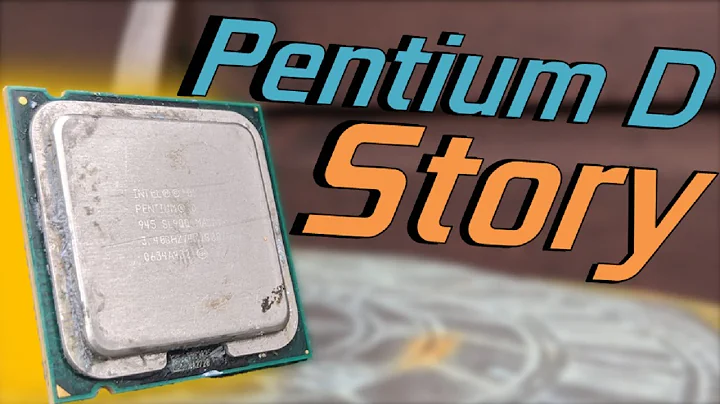What is the difference between these Pentium Extreme Edition CPUs?
Solution 1
First of all I would STRONGLY discourage you from getting that CPU at all costs. They are overpriced (still) and extremely obsolete.
LGA stands for Land Grid Array and refers to the socket type. LGA has the pins on the motherboard not the CPU.
PLGA is Plastic Land Grid Array and refers to how the core is integrated into the rest of the CPU. You don't need to worry about this.
Tray means that the processors are OEM and are purchased by the tray, usually in multiples of 100. You cannot buy just one of them from Intel directly, but they are resold as OEM chips by some vendors. They do not include a heatsink/fan and usually carry a lesser warranty.
As for the 95W chip, it looks like it is the same stepping and revision as another model, so barring a typo it is possible through quality control to bin out the chips that require a lower power consumption but I don't think I've seen this before without it carrying a separate revision number.
Edit: Forgot to answer one thing - The different spec codes refer to different revisions of the processor. Sometimes a newer version of the same processor is released with minor tweaks and changes. These are not usually apparent to end users, though the revision does make a difference to heavy overclockers.
Solution 2
If you look it up on Intel's page it says "End of life" for that processor. They don't sell it any more. Your only solution is to find one that is compatible.
The only question is how you do the maths. If you get a 1.86 Ghz (Xeon Dual) it stands for 3.72 Ghz processor speed (like the old one core Pentium 4 PLGA775). If you get a 2.66 Ghz (xeon dual) it's the same has the old Pentium D (dual 2.66). You can also get Intel® Xeon® Processor 5060 but it works at 78 degrees temp. (not recommended), and by doing these compatibilities maths nothing assures you that these processors will work.
Even if they are very similar to the "oldies" like Pentium 4, D and Extreme, there are always differences in the bus speeds and cache memory that your old motherboard might not support (always see list of supported CPUs).
Though, all CPUs I've seen listed have a maximum 1066 Mhz bus speed and 4 MB cache memory. (And prices can start from 300 Euros and go far above!)
Solution 3
Tray vs. Boxed: Tray: the hotter cpus are cheaper and the PC manufacturers can design to accomodate all that heat. Boxed retail: A cooler running more expensive version: (stepping usually different). Otherwise Joe Consumer would be hard pressed to add in such a hot running cpu. TDP= 130 watts is 13% hotter than previously hottest 115w Pentium 4s.
Related videos on Youtube
Giffyguy
I enjoy writing hardcore OO data-structures in native C++.
Updated on September 17, 2022Comments
-
Giffyguy over 1 year
The CPU in question is the Pentium Extreme Edition 955.
Intel's website shows four "versions", but for the most part they all look identical. They even share the same set of ordering codes.
But one of them has a substantially lower TDP, which is seemingly unexplainable - since everything else is the same. Two of them say "LGA775, Tray" and I have no idea what "Tray" means either. Also, two of them have a different SPEC code.
What I need to know is:
What does "LGA775, Tray" mean?
Why does the one CPU have a lower TDP? And what does that mean for me? Does that mean lower maximum power consumption? Does it mean the CPU may be more stable/endurant, because of a lower heat output?
Why do two of them have a different SPEC code, and what does this mean?
Finally, what does PLGA775 (as opposed to LGA775) mean, and do I need to be worried about that?
Information from Intel's wbsite:
Intel® Pentium® Processor Extreme Edition 955 (4M Cache, 3.46 GHz, 1066 MHz FSB) with SPEC Code1
Boxed Intel® Pentium® Processor Extreme Edition 955
4M Cache, 3.46 GHz, 1066 MHz FSB
LGA775
PLGA775
B1
95 Watts
BX80553955
SL94N2
Intel® Pentium® Processor Extreme Edition 955
4M Cache, 3.46 GHz, 1066 MHz FSB
LGA775, Tray
PLGA775
B1
130 Watts
HH80553PH0994M
SL94N3
Boxed Intel® Pentium® Processor Extreme Edition 955
4M Cache, 3.46 GHz, 1066 MHz FSB
LGA775
PLGA775
B1
130 Watts
BX80553955
SL8WM4
Intel® Pentium® Processor Extreme Edition 955
4M Cache, 3.46 GHz, 1066 MHz FSB
LGA775, Tray
PLGA775
B1
130 Watts
HH80553PH0994M
SL8WM -
Giffyguy over 14 yearsUnfortunately, the 955 & 965 are the only CPUs with a 1066 FSB that my motherboard will support. Looks like I'll be getting the boxed version. What I need to know then is this: Which is more reliable for a 24/7 server system - 95W or 130W TDP? Power consumption is somewhat important, because I will be running five 1TB drives in RAID 5 (right now I'm considering a 520W PSU) But reliability and heat-output are far more critical factors. I am willing to go for a bigger PSU if it will mean a more stable system. Also, how do I know which SPEC is more recent?
-
Xavierjazz over 14 yearsI'm not knowledgeable, but might it not be a good idea to get a new motherboard?
-
100rabh over 14 yearsget the 95WTDP one as it results in lesser power consumption & temperatures. Do ensure you motherboard supports 95W TDP processors
-
Giffyguy over 14 years@Sathya - Thanks for the tip. And do YOU know how to determine which SPEC is more recent?
-
 MDMarra over 14 yearsIntel has a spec finder on their site, it may provide some insight. If you had shopped around a little more you could get way more bang for your buck. Is it too late to return the board?
MDMarra over 14 yearsIntel has a spec finder on their site, it may provide some insight. If you had shopped around a little more you could get way more bang for your buck. Is it too late to return the board? -
Giffyguy over 14 yearsI'm actually pretty happy with the board I have. It meets all of my server's requirements, and doesn't have anything extra that I don't need. I'm not very concerned about giving it more "bang", so much as I just want it to be stable and use my HDDs efficiently. (My last server melted one of my HDDs due to unstable air-flow.) I'm looking at a Coolermaster GeminII S for the CPU, and seven 80mm case fans on three sides of the case. But apart from that, I really don't need a better board/CPU. I just want to make sure I get all 1066 Mhz out of this board's FSB.
-
 MDMarra over 14 yearsFair enough. I suggested more bang for the buck as the Pentium EE is not a server class chip and is quite power-hungry and throws a lot of heat compared to newer, cheaper and faster and equally reliable processors. Sounds like you've got airflow covered though :)
MDMarra over 14 yearsFair enough. I suggested more bang for the buck as the Pentium EE is not a server class chip and is quite power-hungry and throws a lot of heat compared to newer, cheaper and faster and equally reliable processors. Sounds like you've got airflow covered though :) -
Giffyguy over 14 yearsOh ... believe me ... if this board supported a Xeon or an Itanium I'd be all over it. I'm fairly certain this board only supports P4s, PDs, and PEEs (heehee, I think Intel's usage of acronyms may need a little attention). Kinda strange, for what is clearly a server board. But I don't really mind. Basically, this will be close to a top-of-the-line pentium server from about 2006 (or something).
-
Giffyguy over 14 yearsAll this talk about server-class CPUs got me curious. I took a stroll over to Wikipedia for a glance at their documentation on the Xeon CPU line. And I found something verrrry interesting. The Intel Xeon 5063, to be specific - en.wikipedia.org/wiki/Xeon#5000-series_.22Dempsey.22 - According to Wikipedia, the core is virtually identical to the Presler, the only difference being mutli-CPU-support. This CPU is in fact available for around the same price, sometimes less. And like you said, it would be a much more logical choice for a P4-based server. What do you think about this?
-
Giffyguy over 14 yearsTurns out they decided to swap sockets on me. The Xeon 5000 series uses Socket J rather than Socket T. What a let down...
-
 MDMarra over 14 yearsThey change the socket, but they also pick the premium chips off of the to be Xeons. They run all CPUs through various tests off of the assembly line and lock in the multipliers and bus speeds based on performance. Server class CPUs are the cream of the crop and thus the most reliable. They usually change the socket though to lock you in to a premium (though they do offer some under-the hood advantages sometimes)
MDMarra over 14 yearsThey change the socket, but they also pick the premium chips off of the to be Xeons. They run all CPUs through various tests off of the assembly line and lock in the multipliers and bus speeds based on performance. Server class CPUs are the cream of the crop and thus the most reliable. They usually change the socket though to lock you in to a premium (though they do offer some under-the hood advantages sometimes) -
ta.speot.is over 13 years
if u get a 1.86 Ghz (xeon dual) it stands for 3.72 Ghz processor: facepalm -
Christoph Rüegg over 13 yearsUse the edit next time.




